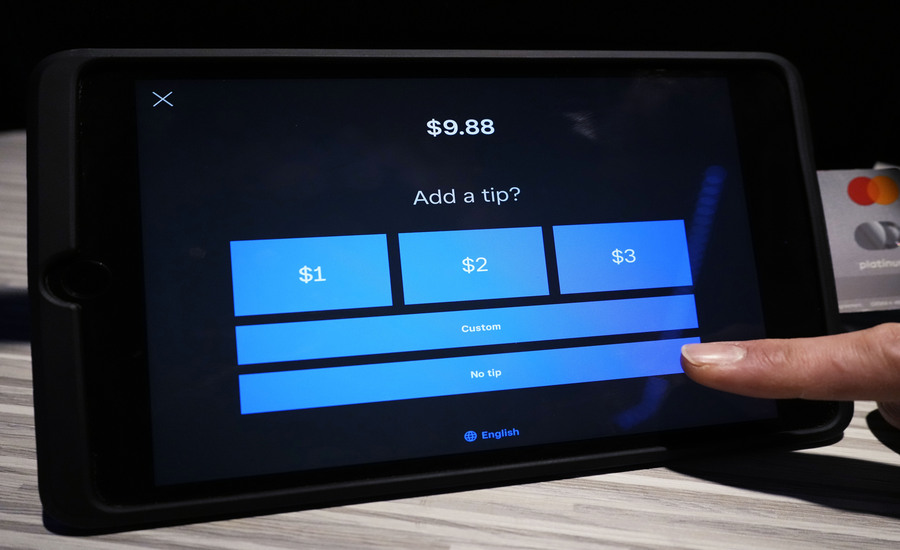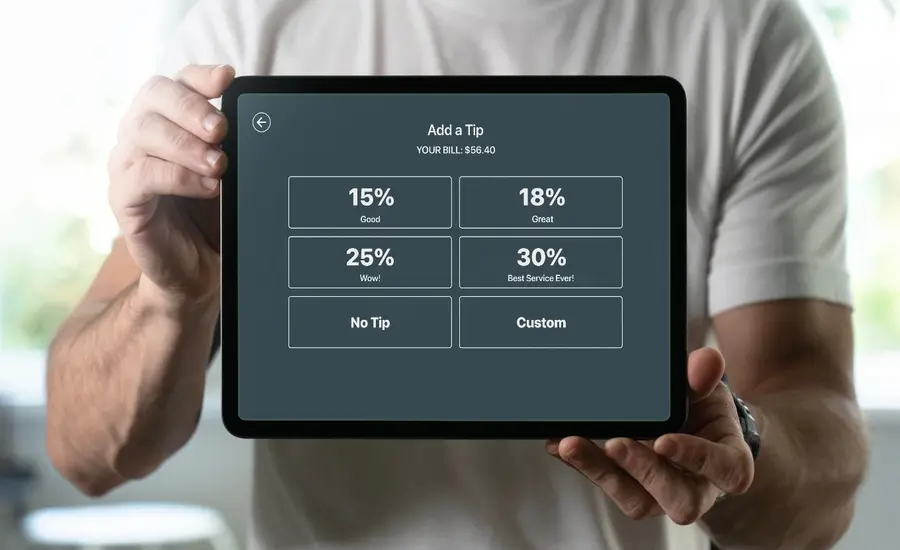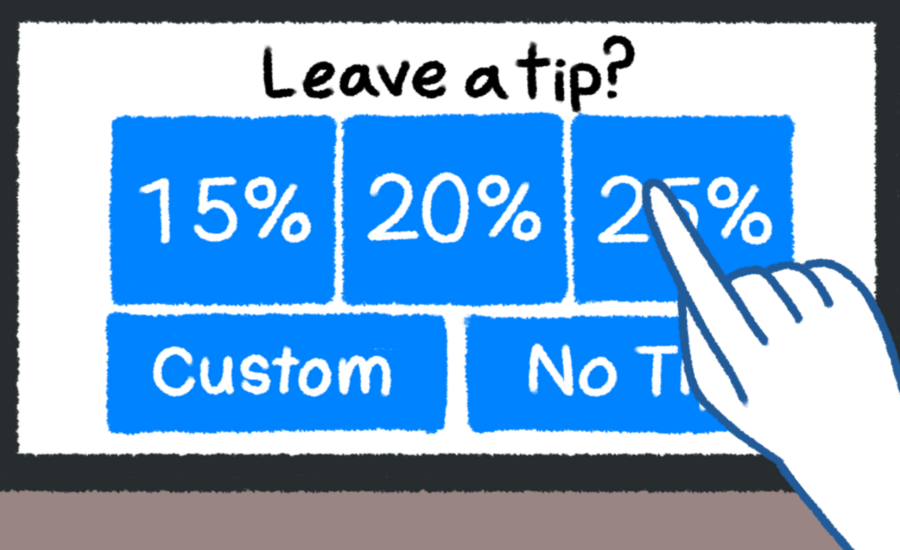Tip Screens: Enhancing Customer Experience and Boosting Revenue
The integration of technology in the service industry has revolutionized how businesses interact with their customers. One of the most notable advancements in recent years is the use of tip screens. These digital interfaces, often found on point-of-sale (POS) systems and payment terminals, have become a crucial element in modern service transactions. Tip screens not only streamline the payment process but also play a significant role in enhancing customer experience and boosting revenue for businesses. This article explores the impact of tip screens on customer behavior, the benefits they offer to businesses, and the best practices for implementing them effectively.
The Evolution of Tipping: From Cash to Digital
The tradition of tipping has been deeply ingrained in service culture for centuries. Originally, tipping involved handing over small amounts of cash as a token of appreciation for good service. Over time, this practice evolved, and with the advent of credit cards, tipping began to take on a more digital form. Customers could add tips to their credit card payments, simplifying the process and reducing the need for cash on hand.
With the rise of digital payment systems, the introduction of tip screens became the next logical step in this evolution. Tip screens are now commonly found on POS systems in restaurants, coffee shops, and various other service-oriented businesses. These screens prompt customers to leave a tip as they complete their transactions, making the process more transparent and seamless. The transition from cash to digital tipping has not only modernized the practice but also provided businesses with new opportunities to enhance customer satisfaction and increase revenue.

The Psychology Behind Tip Screens
The effectiveness of tip screens in boosting revenue can be attributed to the psychology of tipping. When customers are presented with a tip screen, they are subtly encouraged to leave a gratuity. The design and presentation of these screens can significantly influence customer behavior.
One of the key psychological principles at play is the concept of social proof. When customers see that tipping is a common practice, they are more likely to conform to this behavior. Tip screens often display suggested tip amounts or percentages, which serve as a form of social proof. These suggestions create a sense of social expectation, prompting customers to leave a tip that aligns with the norm.
Moreover, tip screens eliminate the awkwardness that sometimes accompanies the tipping process. In traditional tipping scenarios, customers might feel pressure to calculate an appropriate tip or worry about being judged by others for their choice. Tip screens simplify this process by presenting predefined options, making it easier for customers to select a tip without second-guessing their decision. This convenience can lead to increased tip amounts, benefiting both the service staff and the business.
Benefits of Tip Screens for Businesses
Implementing tip screens in a business offers several advantages that extend beyond increased tips. These benefits contribute to improved customer experience, higher employee satisfaction, and overall revenue growth.
1. Increased Revenue
One of the most significant advantages of tip screens is their potential to boost revenue. When customers are presented with tip options during the payment process, they are more likely to leave a tip. Studies have shown that businesses that use tip screens often see an increase in average tip amounts compared to those that rely solely on traditional tipping methods.
Tip screens also provide an opportunity for businesses to introduce higher tip percentages. For example, a screen might suggest tipping 15%, 20%, or 25%, with the default option set to a higher percentage. This subtle nudge encourages customers to leave a more generous tip, which directly contributes to increased revenue for the business.
2. Improved Customer Experience
Tip screens enhance the overall customer experience by making the tipping process more convenient and transparent. Customers appreciate the simplicity of being able to add a tip with just a few taps on a screen. This convenience can lead to higher levels of customer satisfaction, as it reduces the friction associated with calculating and leaving a tip.
Furthermore, tip screens allow customers to have more control over their tipping decisions. They can choose from predefined tip amounts or enter a custom amount if they prefer. This flexibility empowers customers and makes them feel more in control of their spending, which can positively impact their perception of the business.
3. Enhanced Employee Satisfaction
Tip screens can also contribute to increased employee satisfaction. When employees consistently receive higher tips, they are likely to feel more valued and motivated. This can lead to improved job performance and a more positive work environment.
Moreover, tip screens provide transparency in the tipping process. Employees can see the tips they receive immediately after each transaction, reducing the uncertainty and frustration that can arise from relying on cash tips. This transparency fosters trust between employees and the business, as it ensures that tips are accurately recorded and distributed.
4. Streamlined Operations
The integration of tip screens into POS systems streamlines the payment process for businesses. By automating the tipping process, businesses can reduce the time and effort required to handle cash tips. This efficiency not only speeds up transactions but also minimizes the risk of errors in tip calculation and distribution.
In addition, tip screens provide businesses with valuable data on tipping patterns and customer behavior. This data can be used to optimize operations, identify trends, and make informed decisions about pricing and service offerings. For example, if a business notices that customers tend to tip more during certain times of the day, they can adjust staffing levels or introduce promotions to capitalize on these trends.

Best Practices for Implementing Tip Screens
While the benefits of tip screens are clear, their effectiveness depends on how they are implemented. Businesses must consider several factors to ensure that tip screens enhance the customer experience and drive revenue growth. Here are some best practices for implementing tip screens effectively:
1. Design and User Experience
The design of the tip screen plays a crucial role in its effectiveness. A well-designed screen should be visually appealing, easy to navigate, and aligned with the brand’s overall aesthetic. The screen should clearly display the tip options, making it easy for customers to select their preferred amount.
It’s also important to consider the placement of the tip screen within the payment process. The tip prompt should appear at a logical point in the transaction, such as after the customer has reviewed their order but before they complete the payment. This timing ensures that the tip prompt is relevant and doesn’t disrupt the flow of the transaction.
2. Suggested Tip Amounts
Businesses should carefully consider the suggested tip amounts or percentages displayed on the screen. These suggestions can influence customer behavior, so it’s important to strike a balance between encouraging generosity and avoiding pressure.
One effective approach is to offer a range of tip options, such as 15%, 20%, and 25%. This range provides customers with choices while subtly encouraging them to choose a higher tip percentage. Businesses can also include a custom tip option for customers who prefer to enter their own amount.
3. Transparency and Communication
Transparency is key when implementing tip screens. Customers should understand how the tips they leave are distributed among the staff. Businesses can use the tip screen to provide information about the tipping policy, such as whether tips are shared among all employees or given directly to the server.
Clear communication about the purpose of the tip screen can also enhance customer trust. For example, businesses can include a brief message on the screen explaining that tips help support the staff and contribute to a positive dining or service experience. This transparency can encourage customers to tip more generously.
4. Staff Training
Staff training is essential to the successful implementation of tip screens. Employees should be familiar with how the tip screen works and be able to assist customers if needed. Training should also emphasize the importance of maintaining a positive attitude when discussing tips with customers.
In addition, staff should be encouraged to provide excellent service, as this directly impacts the likelihood of receiving higher tips. When employees understand the connection between their service quality and the tips they receive, they are more likely to be motivated to deliver exceptional customer experiences.
Case Studies: Successful Implementation of Tip Screens
To illustrate the impact of tip screens on customer experience and revenue, let’s explore a few case studies of businesses that have successfully implemented this technology.
Case Study 1: A Local Coffee Shop
A small coffee shop in a busy urban area implemented tip screens on its POS system to streamline transactions and increase tips. The owner decided to offer three suggested tip amounts: 15%, 20%, and 25%, with the default option set to 20%.
The results were impressive. Within the first month, the average tip amount increased by 15%, and overall revenue grew by 10%. Customers appreciated the convenience of the tip screen and the ability to quickly select a tip amount that matched their preferences. The staff also noticed an improvement in their take-home tips, which boosted morale and job satisfaction.
Case Study 2: A Fine Dining Restaurant
A high-end restaurant wanted to enhance the tipping experience for its patrons while maintaining the elegance of its dining environment. The restaurant implemented tip screens that featured a sleek, minimalist design that aligned with the brand’s upscale image.
To avoid any perception of pressure, the restaurant offered a range of tip options, from 18% to 25%, with the default set to 20%. The tip screen also included a custom tip option for patrons who wanted to leave a specific amount.
The implementation of tip screens led to a 20% increase in the average tip amount and a noticeable improvement in customer feedback. Guests appreciated the discretion and ease of the digital tipping process, which contributed to a more refined dining experience.
Case Study 3: A Fast-Casual Restaurant Chain
A fast-casual restaurant chain with multiple locations across the country sought to standardize its tipping process and increase employee satisfaction. The chain introduced tip screens across all its locations, with suggested tip percentages of 15%, 18%, and 20%.
The results were consistent across the board: average tip amounts increased by 12%, and employee turnover decreased by 8%. The chain also benefited from the data collected through the tip screens, which provided insights into customer behavior and allowed the management to optimize staffing and service offerings.
Challenges and Considerations
While tip screens offer numerous benefits, businesses must also be aware of potential challenges and considerations when implementing this technology.
1. Customer Perception
Some customers may perceive tip screens as a form of pressure or manipulation, especially if the suggested tip amounts are perceived as too high. To mitigate this, businesses should ensure that the tip screen is designed in a way that feels fair and respectful to customers. Offering a range of tip options and including a custom tip feature can help alleviate concerns about pressure.
2. Technical Issues
As with any technology, tip screens can be prone to technical issues such as glitches, slow response times, or connectivity problems. These issues can disrupt the payment process and lead to customer frustration. Businesses should work with reliable POS providers and conduct regular maintenance to ensure that the tip screens function smoothly.
3. Regulatory Compliance
In some regions, there may be specific regulations governing the use of tip screens, particularly regarding the transparency of tip distribution and employee compensation. Businesses should be aware of these regulations and ensure that their tipping practices comply with local laws.
4. Customer Demographics
The effectiveness of tip screens can vary depending on the demographics of the customer base. For example, younger customers who are more comfortable with digital technology may respond more positively to tip screens, while older customers may prefer traditional tipping methods. Businesses should consider their target audience when deciding whether to implement tip screens and how to design the user interface.
Future Trends in Tipping Technology
As technology continues to evolve, the future of tipping is likely to see further innovations that enhance customer experience and optimize revenue for businesses. Some of the emerging trends in tipping technology include:
1. Mobile Tipping
Mobile payment apps are becoming increasingly popular, and many of these apps now offer tipping features. Furthermore, mobile tipping allows customers to leave a tip directly from their smartphones, providing a seamless and convenient experience. As mobile payment adoption grows, businesses may integrate mobile tipping options into their existing POS systems.
2. AI-Powered Tipping Suggestions
Artificial intelligence (AI) has the potential to revolutionize the way tipping suggestions are generated. AI algorithms can analyze customer behavior, spending patterns, and service quality to offer personalized tipping suggestions. These suggestions can be tailored to individual customers, making them more likely to leave a tip that aligns with their preferences.
3. Contactless Tipping
The COVID-19 pandemic accelerated the adoption of contactless payment methods, and this trend is likely to continue. Contactless tipping allows customers to leave a tip without physically interacting with the payment terminal. This technology can be integrated into tip screens or mobile payment apps, offering a hygienic and efficient way to tip.
4. Cryptocurrency Tipping
As cryptocurrencies gain mainstream acceptance, businesses may begin to offer tipping options in digital currencies such as Bitcoin or Ethereum. Cryptocurrency tipping can appeal to tech-savvy customers and offer a novel way to engage with the business. However, businesses will need to consider the volatility and regulatory challenges associated with cryptocurrencies.
Conclusion: The Impact of Tip Screens on the Service Industry
Tip screens have emerged as a powerful tool for enhancing customer experience and boosting revenue in the service industry. By streamlining the tipping process, increasing transparency, and leveraging psychological principles, tip screens encourage customers to leave more generous tips. This not only benefits service staff but also contributes to the overall success of the business.
However, the effectiveness of tip screens depends on thoughtful implementation. Businesses must consider factors such as design, suggested tip amounts, transparency, and customer demographics to ensure that tip screens enhance the customer experience rather than detract from it. With the right approach, tip screens can become a valuable asset in creating a positive and profitable service environment.
As the service industry continues to evolve, businesses that embrace tipping technology will be better positioned to meet the expectations of modern customers and maximize their revenue potential. Whether through traditional tip screens, mobile tipping, or emerging trends like AI-powered suggestions and cryptocurrency tipping, the future of tipping is set to be increasingly digital, dynamic, and customer-focused.




